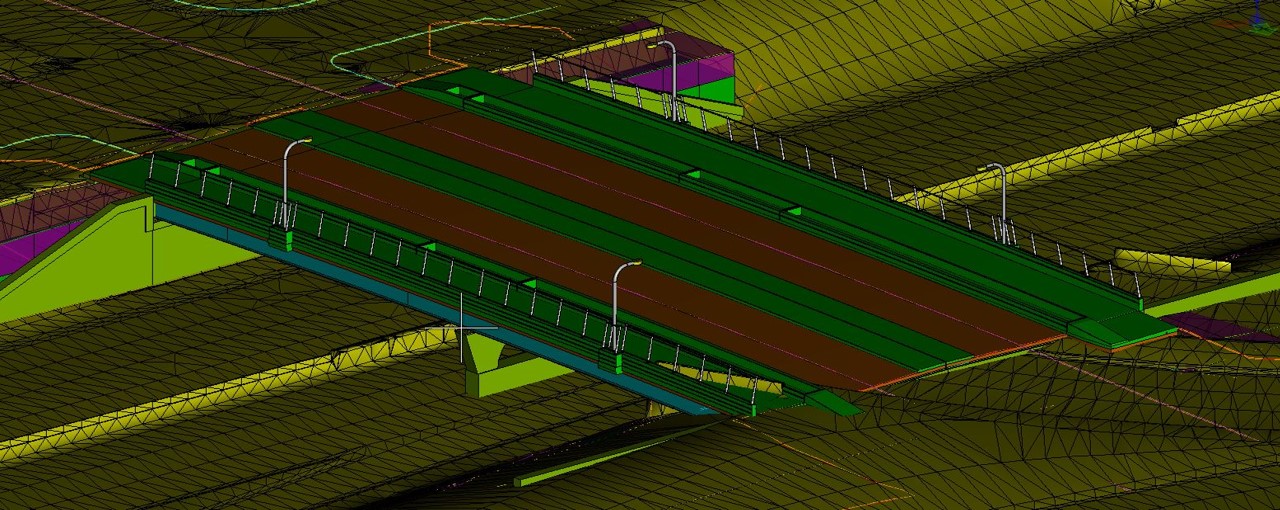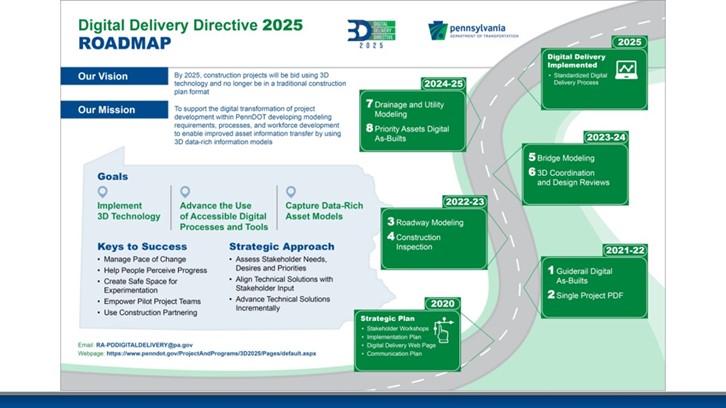e-Ticketing and Digital As-Builts
The e-Ticketing and Digital As-Builts innovation uses digital methods to enhance the accessibility of project data. It is a Federal Highway Administration (FHWA) Every Day Counts Round 6 (EDC-6) innovation that Pennsylvania championed.
How Does It Work?
Traditionally, PennDOT has used a paper-based ticket system to record information about materials delivered to construction sites. These paper tickets are collected by staff on site and convey information about the material supplier, design, and quantity of the materials. By using e-Ticketing technologies, PennDOT can improve safety for our workers and reduce the time associated with ticket collection, data entry, analysis, and storage.
PennDOT employees can now utilize electronic systems through a web browser or app that allow them to review, add comments, and manage tickets electronically. The electronic ticketing system can provide ticket information for aggregate, concrete and asphalt deliveries to a project, as well as reporting individual and cumulative loads of material delivered. If a material supplier cannot support e-ticketing, alternative methods, may be used through coordination with the project team.
For Digital As-Builts, PennDOT has conventionally received two-dimensional (2D) as-built plan sheets, which depict the final specifications of an asset after it has been delivered or completed. However, the transportation industry is transitioning to digital data and 3D models, which can provide an enhanced level of data.
PennDOT’s vision is that by 2025, construction projects will be bid using 3D technology instead of the traditional construction plan format. This means that projects will be digitally designed as a 3D model and provided to contractors for construction. The 3D model will then be updated to capture any design changes during construction to create a Digital As-Built. Digital As-Builts can provide a searchable and comprehensive inventory of PennDOT assets, including surrounding property and subsurface utility information, after project completion.
What Are The Benefits?
e-Ticketing eliminates paper documentation, improving efficiency and safety for workers who no longer need to walk around material delivery trucks at a site to receive paper tickets. Electronic data helps ensure reliable quantities and payments and reduces processing time. It also allows for better data archiving for future reference, translating into improved design, construction, maintenance, and operations.
Digital As-Builts can improve design quality, which reduces project cost and improves the safety of the end user. The digital delivery of projects can also streamline interactions between PennDOT, design consultants, and construction contractors. This enhanced level of data can enable PennDOT to develop maintenance practices and design future projects more effectively. e-Ticketing and Digital As-Built technology pairs well to transform PennDOT’s design and construction practices, improving accuracy and preparing them for future digital innovations.

Innovation in Motion
PennDOT assembled a steering committee to create a pilot specification for e-Ticketing on PennDOT projects. The committee consisted of public agencies and industry partners, including the American Council of Engineering Companies of Pennsylvania, the American Concrete Pavement Association, the Associated Pennsylvania Constructors, the Pennsylvania Aggregates and Concrete Association, the Pennsylvania Asphalt Pavement Association, the Pennsylvania Motor Truck Association, the Pennsylvania Turnpike Commission, PennDOT and FHWA. A pilot study was conducted during the 2022 construction season, consisting of up to 15 projects per PennDOT district, to begin rollout of the innovation. Full implementation in all PennDOT projects is planned for 2024.
Regarding Digital As-Builts, PennDOT has developed a digital delivery roadmap to facilitate its goal of bidding construction projects using 3D technology by 2025 and creating Digital As-Builts for all projects. The roadmap identifies keys to success, including managing the pace of change and creating space for experimentation. An important aspect of this is utilizing various pilot studies to begin developing modeling processes and knowledge within the transportation engineering community in Pennsylvania.
Six pilot projects have been completed that were focused on developing Digital As-Builts for guiderail installation,. Construction information, asset properties, and GPS coordinates were collected for the guiderails associated with each project. This data was imported into PennDOT maintenance databases. Additionally, three pilot projects are underway to create 3D models that will be used as the legal document for proposed earthwork and pavement structures, and another three pilot projects are planned to deliver 3D bridge models as the legal document for construction bidding. These pilot studies will lead to the planned development of Digital As-Builts for priority assets in 2024-2025, and a standardized digital delivery process by 2025. To learn more visit PennDOT’s Digital Delivery Directive 2025 webpage.

More Information